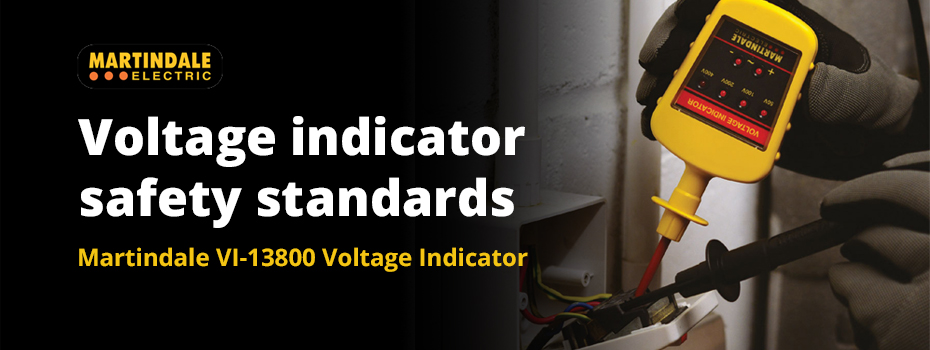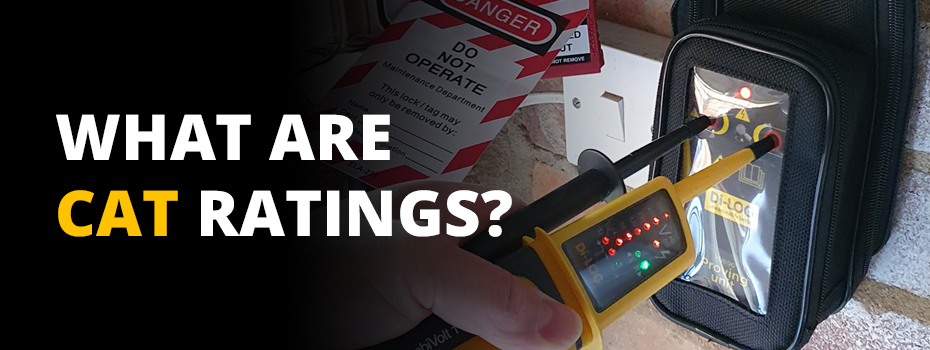 Do I need to calibrate my PAT Tester? People ask this question all the time, and we understand why. Calibrating your PAT is costly; it’s inconvenient; it’s annoying. However, the reality is it’s also necessary. Missing a calibration could be devastating and likely to cost you more money and generate more inconvenience than if you'd just calibrated your tester in the first place. Find out why PAT tester calibration is so crucial and get the answers to other frequently asked questions.[1]
Continue reading →
Do I need to calibrate my PAT Tester? People ask this question all the time, and we understand why. Calibrating your PAT is costly; it’s inconvenient; it’s annoying. However, the reality is it’s also necessary. Missing a calibration could be devastating and likely to cost you more money and generate more inconvenience than if you'd just calibrated your tester in the first place. Find out why PAT tester calibration is so crucial and get the answers to other frequently asked questions.[1]
Continue reading →Electrical safety
-
Do I Need to Calibrate my PAT Tester? Common PAT Calibration FAQs Answered
 Do I need to calibrate my PAT Tester? People ask this question all the time, and we understand why. Calibrating your PAT is costly; it’s inconvenient; it’s annoying. However, the reality is it’s also necessary. Missing a calibration could be devastating and likely to cost you more money and generate more inconvenience than if you'd just calibrated your tester in the first place. Find out why PAT tester calibration is so crucial and get the answers to other frequently asked questions.[1]
Continue reading →
Do I need to calibrate my PAT Tester? People ask this question all the time, and we understand why. Calibrating your PAT is costly; it’s inconvenient; it’s annoying. However, the reality is it’s also necessary. Missing a calibration could be devastating and likely to cost you more money and generate more inconvenience than if you'd just calibrated your tester in the first place. Find out why PAT tester calibration is so crucial and get the answers to other frequently asked questions.[1]
Continue reading → -
Top 10 Things Electricians Wish You Wouldn’t Do
 A recent survey of electricians revealed the ten most common and dangerous electrical mistakes made in British homes. Hundreds of UK electricians were questioned about which electrical errors they encountered most often and were then asked to rank these mistakes in the order of severity. The investigation comes in the wake of findings that 49% of Brits have interfered with their home’s electrics. We have summarised the results of the report, initially published in ECN magazine, below.[1]
Continue reading →
A recent survey of electricians revealed the ten most common and dangerous electrical mistakes made in British homes. Hundreds of UK electricians were questioned about which electrical errors they encountered most often and were then asked to rank these mistakes in the order of severity. The investigation comes in the wake of findings that 49% of Brits have interfered with their home’s electrics. We have summarised the results of the report, initially published in ECN magazine, below.[1]
Continue reading → -
4 Reasons to Choose a Fluke T-Series Two Pole Voltage & Continuity Tester
 Critical to ensuring safe working practices, experienced, professional electricians know they can rely on Fluke’s T-Series of Two-Pole Voltage & Continuity Testers to deliver reliable voltage and continuity detection and readings (model dependent). Fluke’s T-Series Two Pole Voltage & Continuity Detectors are built with state-of-the-art measurement and safety technology; however, if you’re still on the fence about purchasing one of these indicators, here are four reasons why you should pick a Fluke T-Series Two-Pole Voltage & Continuity Tester.
Continue reading →
Critical to ensuring safe working practices, experienced, professional electricians know they can rely on Fluke’s T-Series of Two-Pole Voltage & Continuity Testers to deliver reliable voltage and continuity detection and readings (model dependent). Fluke’s T-Series Two Pole Voltage & Continuity Detectors are built with state-of-the-art measurement and safety technology; however, if you’re still on the fence about purchasing one of these indicators, here are four reasons why you should pick a Fluke T-Series Two-Pole Voltage & Continuity Tester.
Continue reading → -
Martindale Meets Voltage Indicator Safety Standards
 In May 2013, a new safety standard, BS EN 61243-3:2010, came into effect. It required voltage indicator manufacturers to incorporate a different method of limiting current in the event of cable damage. To ensure compliance with this revised British and European standard, which has been included in every subsequent edition of HSE’s GS38 Guidance Note, Martindale has updated their VI-13700/2 Two-Pole Voltage Indicator.
Continue reading →
In May 2013, a new safety standard, BS EN 61243-3:2010, came into effect. It required voltage indicator manufacturers to incorporate a different method of limiting current in the event of cable damage. To ensure compliance with this revised British and European standard, which has been included in every subsequent edition of HSE’s GS38 Guidance Note, Martindale has updated their VI-13700/2 Two-Pole Voltage Indicator.
Continue reading → -
Safe Isolation: Staying A.L.I.V.E
 It has been sixteen years since Michael Adamson, an experienced 26-year-old electrician, tragically died after cutting a cable marked “NOT IN USE”. The cable had been wired into a distribution board and was not safely isolated; Michael suffered a fatal electric shock. Over the years, leading bodies, such as the Electrical Safety Roundtable, have worked to develop procedures and protocols designed to prevent injuries and fatalities caused by a lack of safe isolation. Now, Martindale has developed an easy-to-follow and memorable safe isolation process: A.L.I.V.E.[1]
Continue reading →
It has been sixteen years since Michael Adamson, an experienced 26-year-old electrician, tragically died after cutting a cable marked “NOT IN USE”. The cable had been wired into a distribution board and was not safely isolated; Michael suffered a fatal electric shock. Over the years, leading bodies, such as the Electrical Safety Roundtable, have worked to develop procedures and protocols designed to prevent injuries and fatalities caused by a lack of safe isolation. Now, Martindale has developed an easy-to-follow and memorable safe isolation process: A.L.I.V.E.[1]
Continue reading → -
What Are CAT Ratings?
 In summary, CAT ratings are overvoltage categories; they are safety ratings that indicate the types of electrical environments in which test and measurement instruments can be safely used. Understanding these categories is crucial to ensuring that you select the correct tool when working on an electrical installation.[1]
Continue reading →
In summary, CAT ratings are overvoltage categories; they are safety ratings that indicate the types of electrical environments in which test and measurement instruments can be safely used. Understanding these categories is crucial to ensuring that you select the correct tool when working on an electrical installation.[1]
Continue reading → -
Keeping Abreast of the Wiring Regulations 3rd Amendment
The 5th January 2015 publication of the latest version of BS7671 will introduce the 3rd Amendment to the 17th Edition of the IET Wiring Regulations. The enforcement of the content within the latest edition of the Wiring Regulations will be required from July 2015, with new regulations for the design, installation and commissioning of electrical installations, plus inspection and testing. It is important for electricians to get up to speed with Amendment 3 and its changes, advises Carole Jameson, Training Centre Administration Manager at PASS Electrical Training. Continue reading → -
Angle Grinder Mishap with Electrical Cable Flings Worker across Basement
A Liverpool worker is ‘lucky to be alive’ after cutting through a live mains cable, having been told been told the electricity supply had been disconnected, Liverpool Magistrates’ Court heard last week. Continue reading → -
Mind That Electric Gate
Electric gates must be adequately guarded to avoid injury or death and yesterday a Leicester contractor pleaded guilty to breaching Regulation 18 of the Workplace (Health, Safety and Welfare) Regulations 1992 after a child’s head was trapped in electric gate, and was fined £4,000 with costs. Continue reading → -
Minister Unveils New Part P Register
Last week at an event in the Houses of Parliament, the Minister for Communities and Local Government, Stephen Williams MP, officially unveiled the new mark and register for all domestic Part P registered electrical installers. The new website and logo was developed by all Department of Communities and Local Government (DCLG) authorised electrical Competent Person Scheme Operators in a bid to create a single point of reference for consumers seeking a registered electrical contractor. Continue reading →


